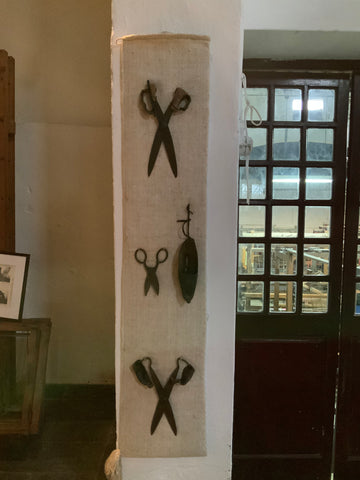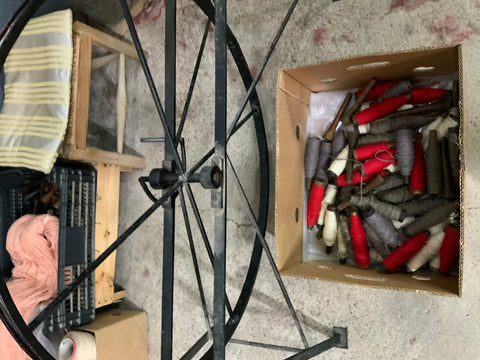Fábrica Alentejana de Lanifícios
A week after our vist to Fábrica de Cobertores de José Freire. We had an appointment in Alentejo with Mizette , the owner of Fabrica Alentejana de Lanifícios .A Dutch lady that moved to Portugal right after the revolution , and that is single handily responsible for keeping this craft and factory alive . We had met Mizette 5 years before on our first trip down there to discover this amazing little factory.
Rob and I set of on a Sunday Morning on a flight to Lissabon , and planned a little excursion to the small and beautiful village of Carrasqueira near Comporta . A unique fishing village , which lies on the left bank of the Sado River. Here you will find a multitude of wooden jetties on stilts (known as cais palafita) zigzagging along the muddy marshes. Fishing huts, some naturally weathered, others individually painted, stand atop the wharf.






From there we took the road to Monsaraz , where we where to spend the night .
The medieval village of Monsaraz, maintains the magic from ancient times like few others in the world. Made of lime and schist .
Suspended in time, the historic village, one of the oldest in Portugal, is a mandatory destination to add to your list of places to visit in Alentejo. Especially after, in 2017, it won the category “Monument Villages” in the competition 7 Maravilhas de Portugal – Aldeias (7 wonders of Portugal – Villages).



On Monday Morning we made our way to Reguengos De Monsaraz , for our appointment with Mizette Nielsen . Here factory is recognised by the New York Times as one of only three original secular wool handicrafts to still exist in Europe, the Fábrica Alentejana de Lanifícios (Wool Factory of Alentejo) is one of the most recognized and prized wool factories in the country.
Here they produce all sorts of blankets and rugs and carpets, with a team of qualified professionals using only the most high-quality ingredients to produce some of the best wool products in the country.Founded in the early 19th century, the blankets and wool products produced by the factory were used by local shepherds to protect themselves from the cold, and as such most of the patterns and colours used are closely related to Alentejo, with its floral fields of orange, yellow, brown and red, and motifs that resemble the typical houses from Alentejo.
These are all made to our specifications and we have made 4 different rugs and only 4 of each . Next production we'll do something different . So they are limited to 4 per design . Exclusively for Eat Dust .









